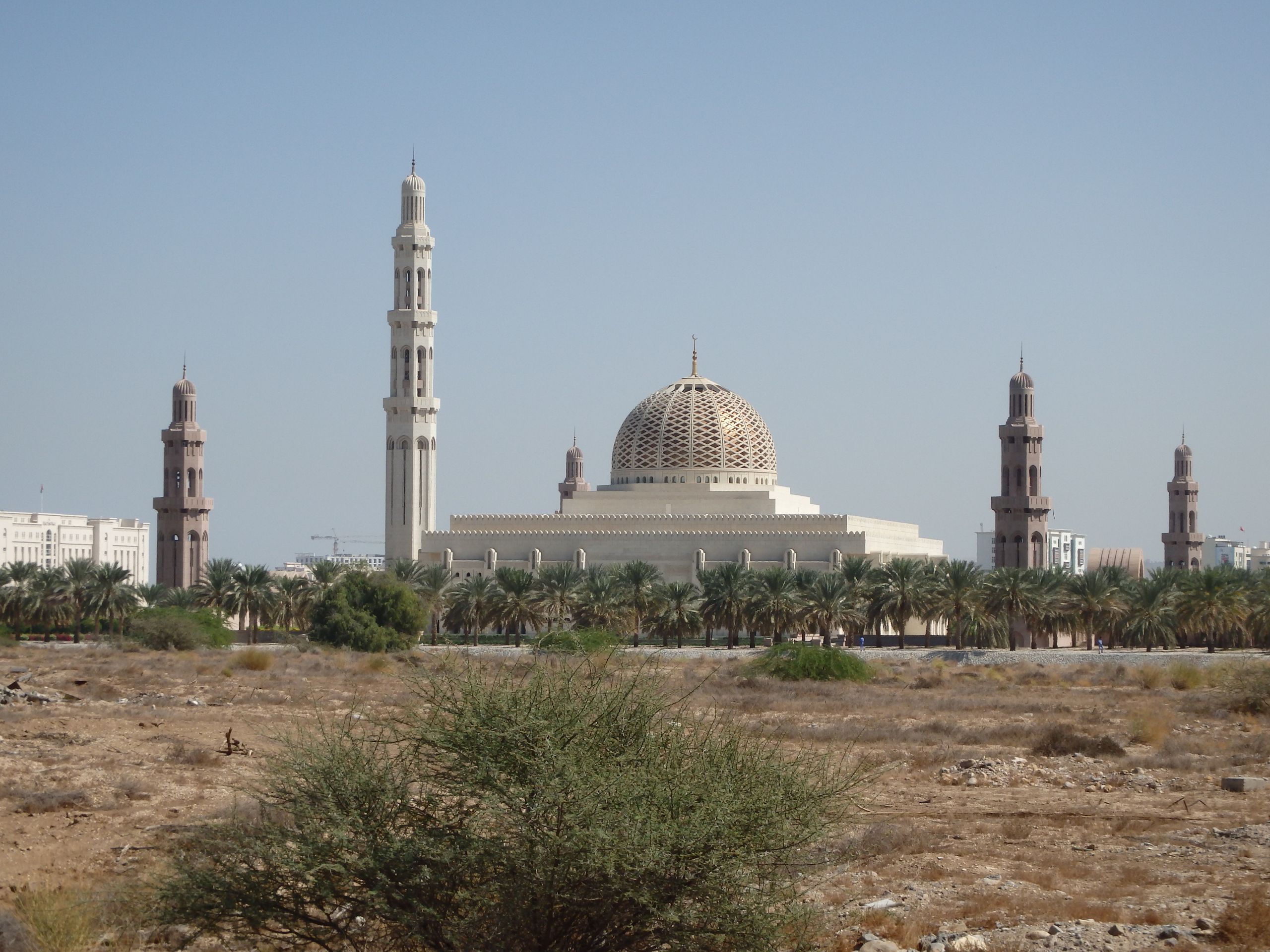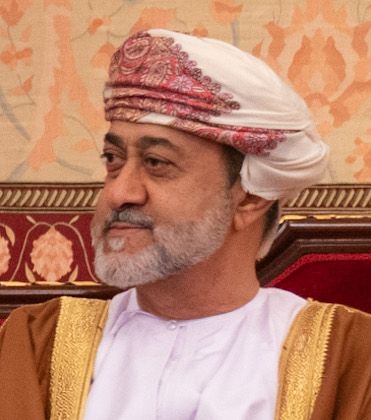
steiners-on-tour-oman-2022
vakantio.de/steiners-on-tour-oman-2022
Blog 13 - From the Desert to the Coast
Objavljeno: 26.03.2022
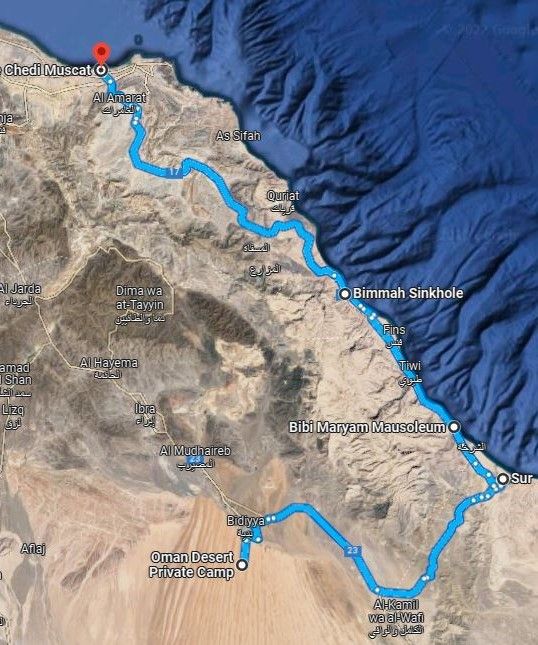
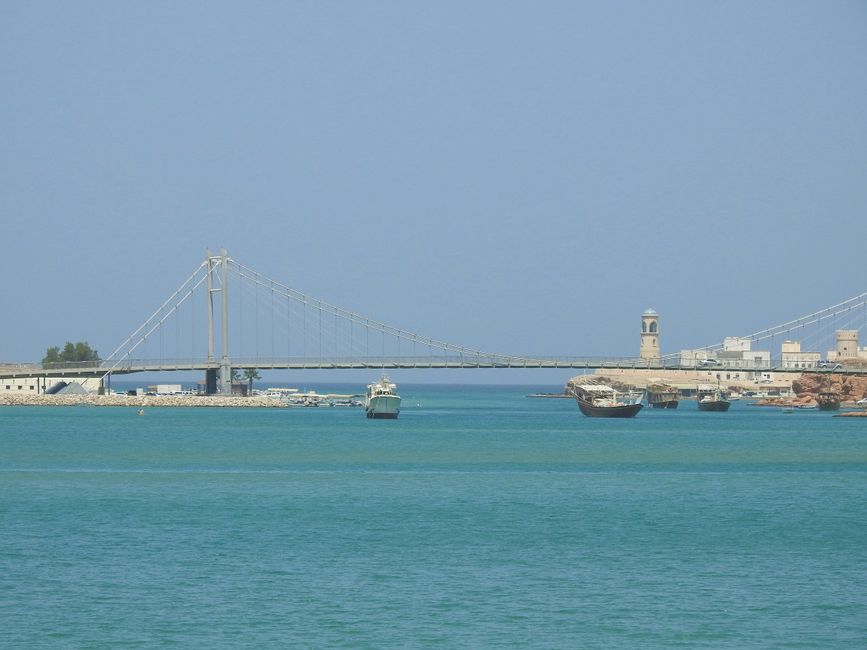
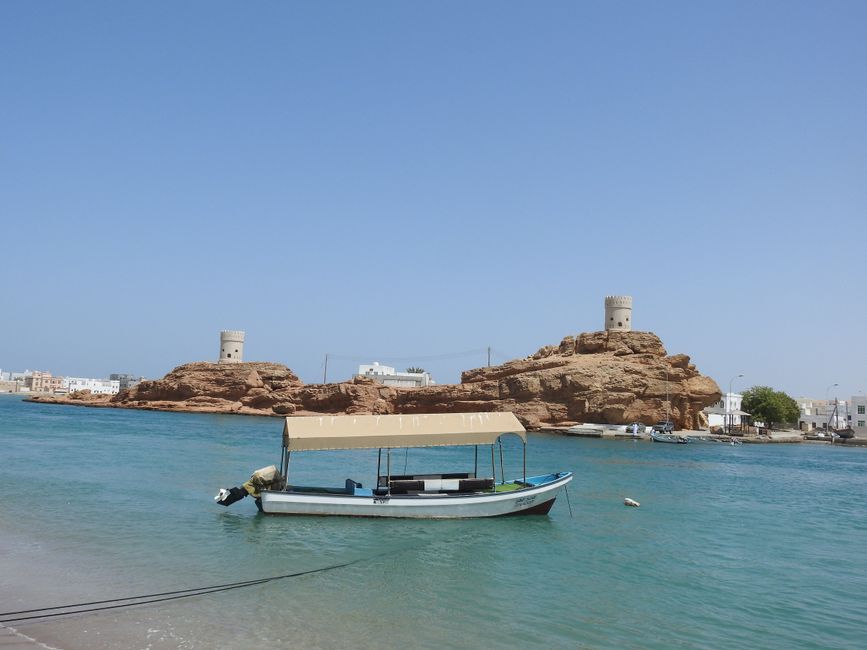
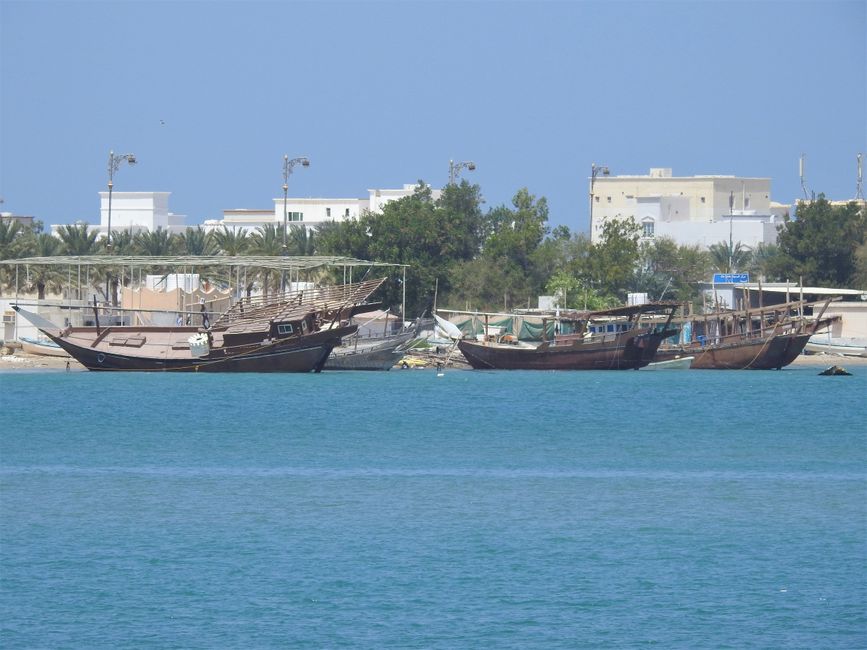
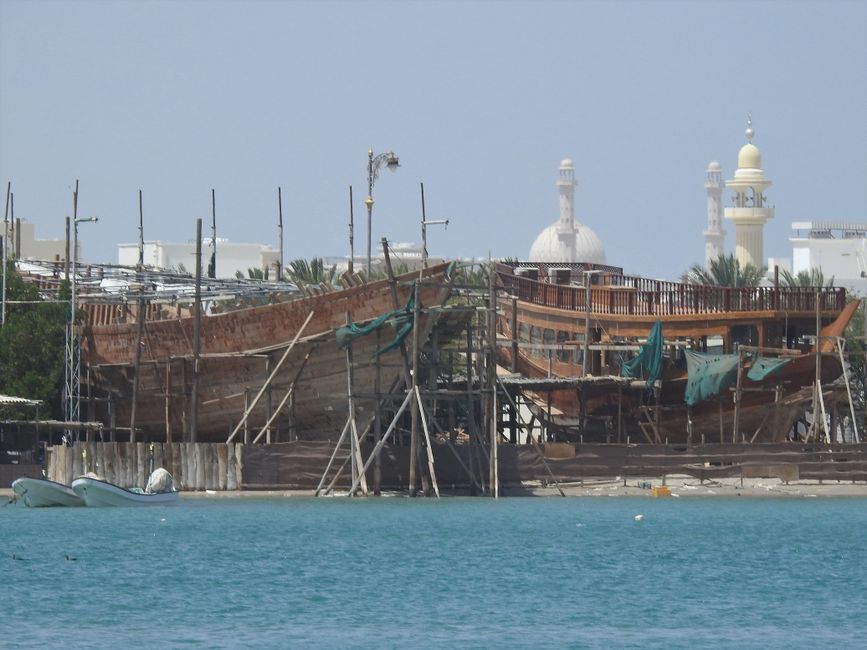
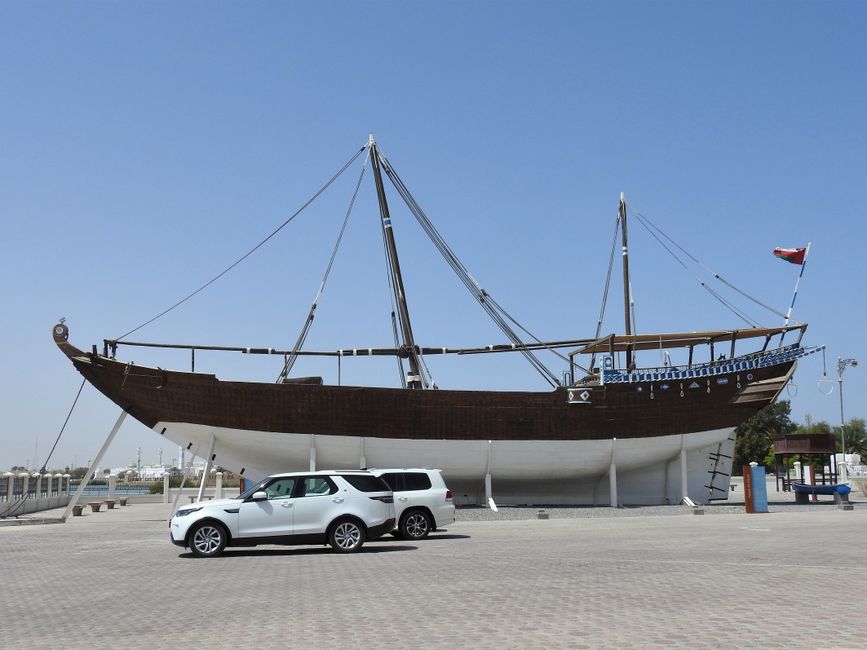
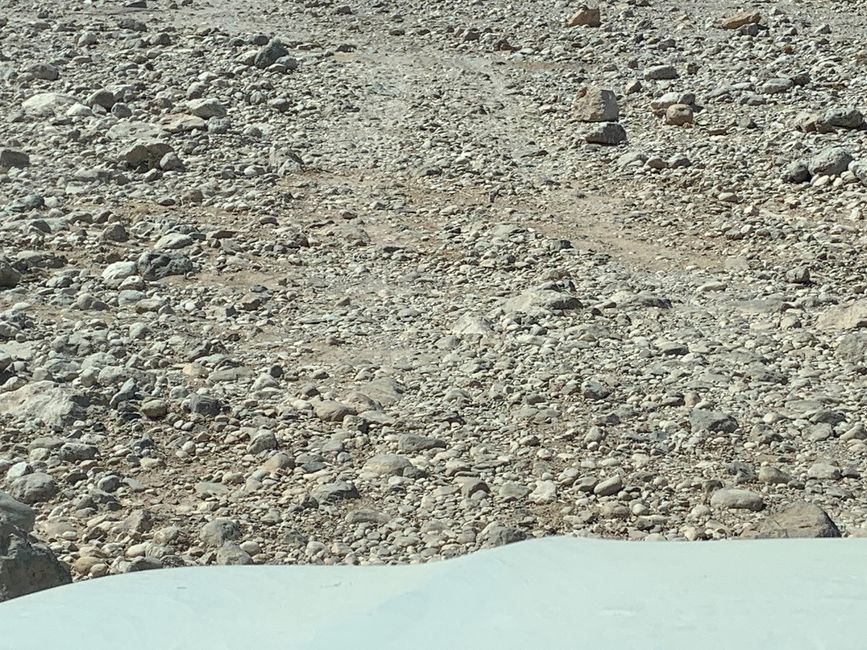
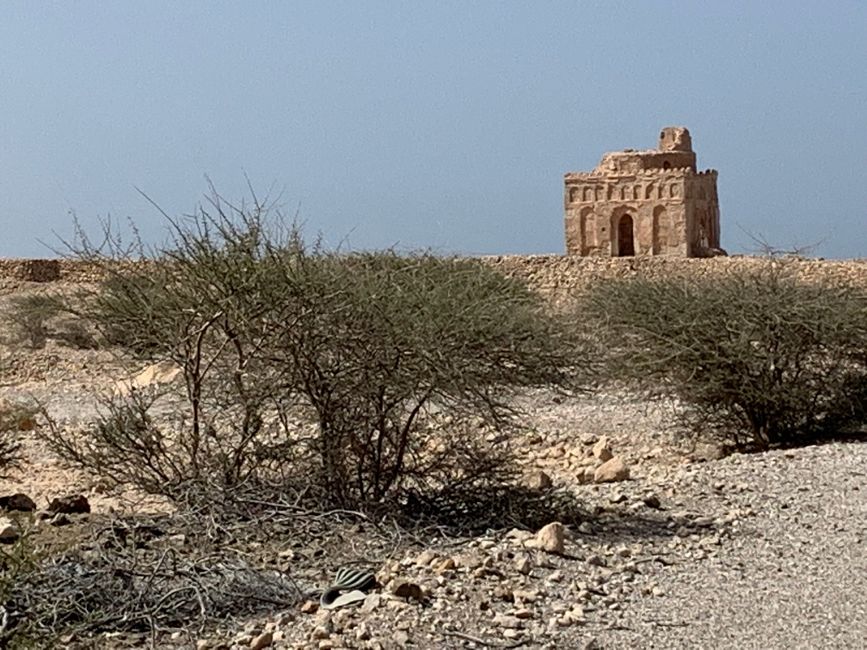
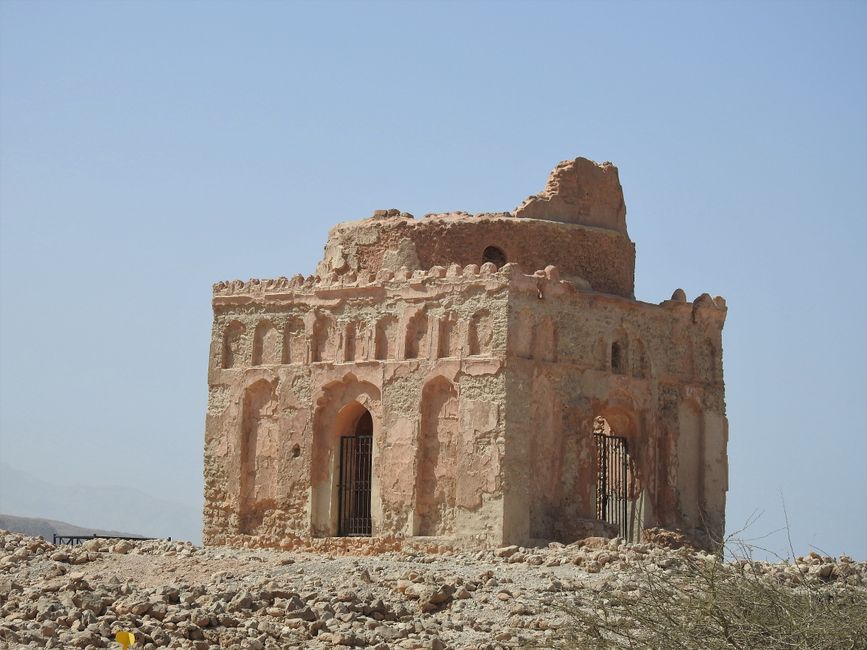
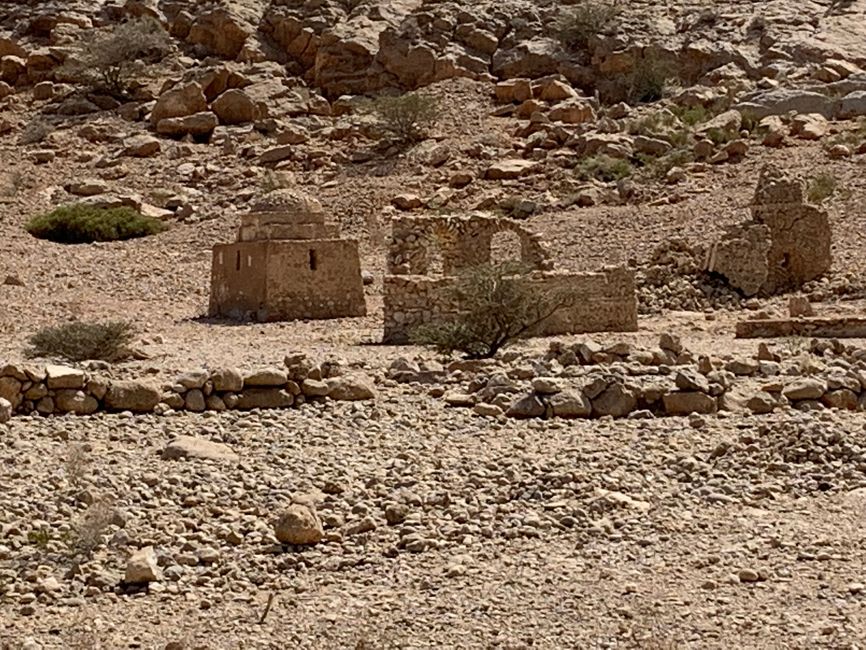
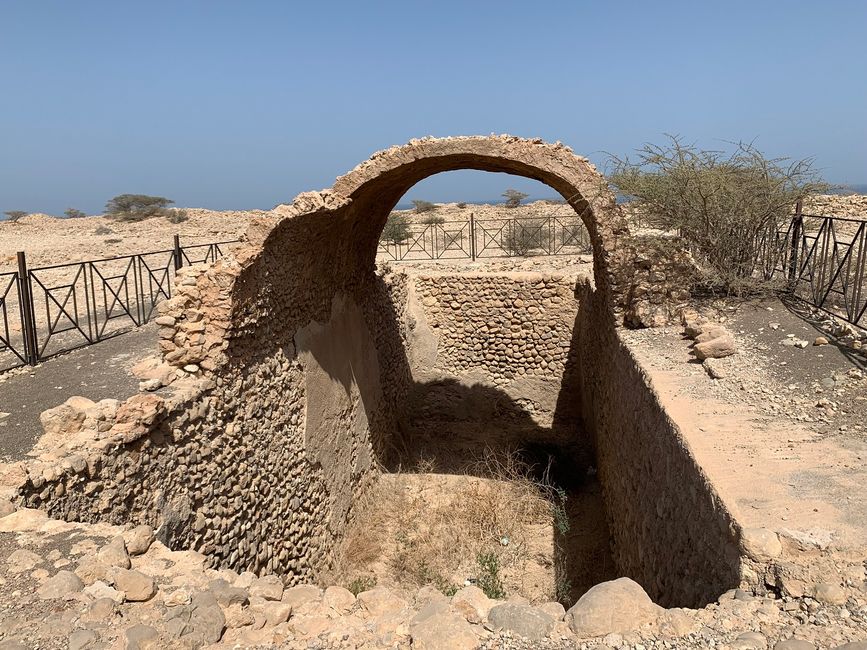
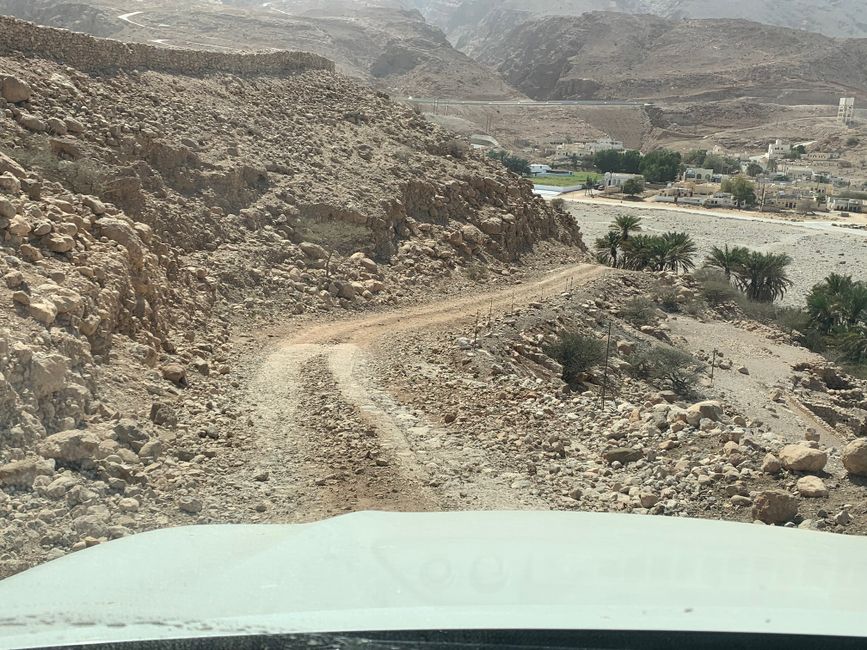
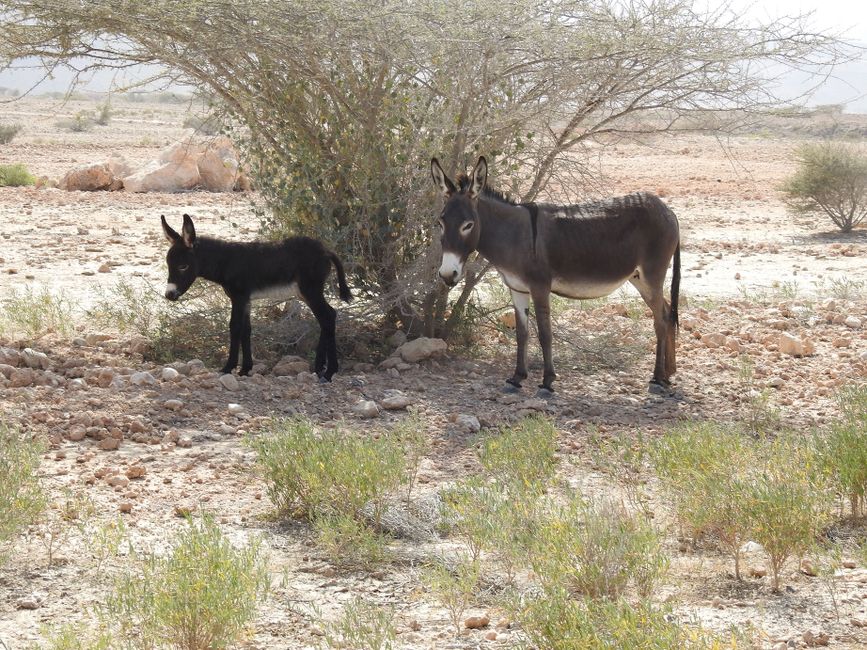
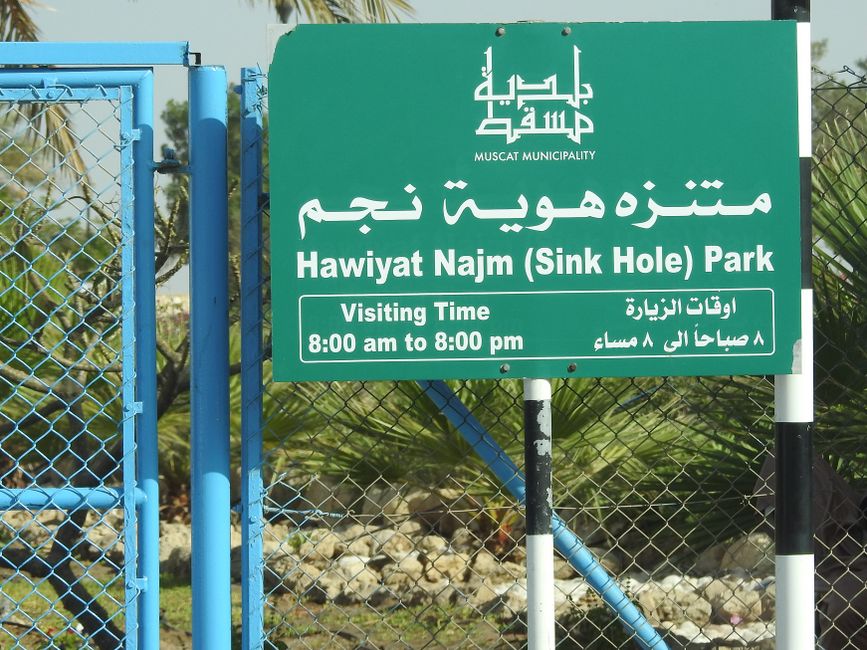
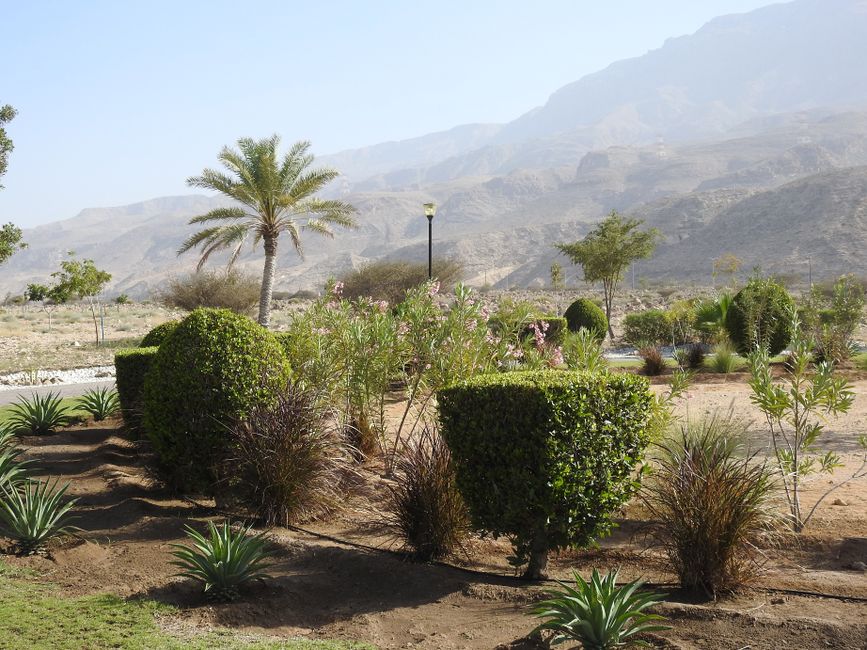
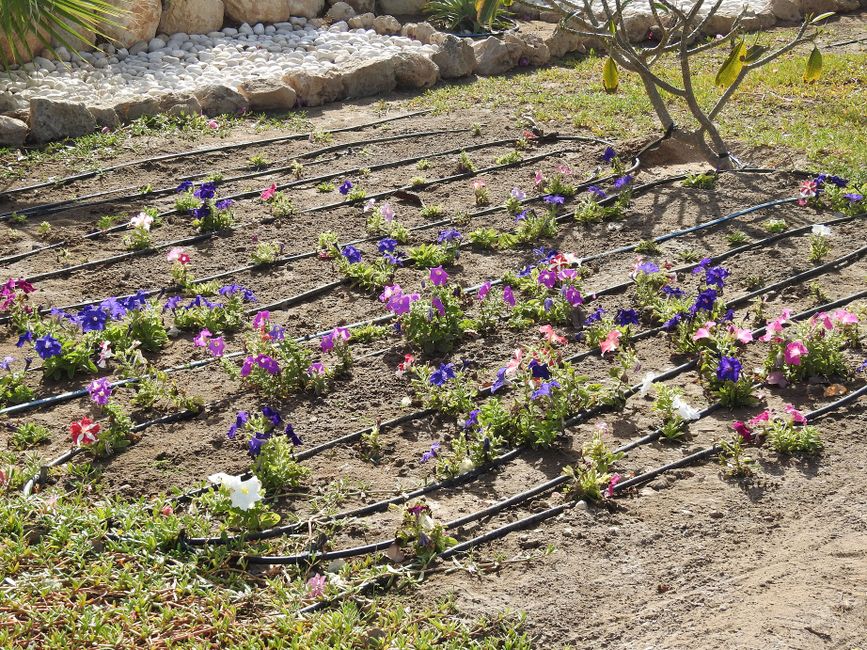
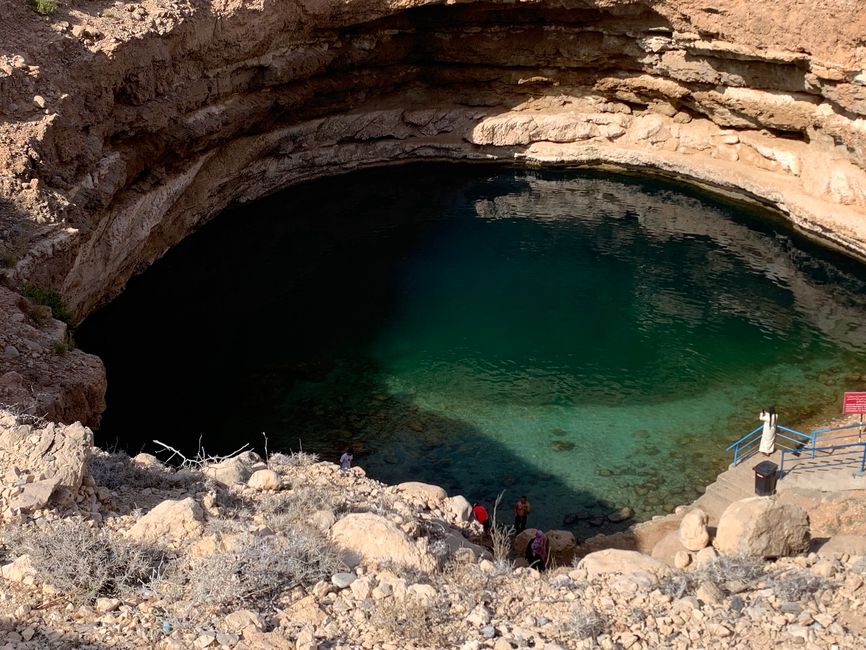
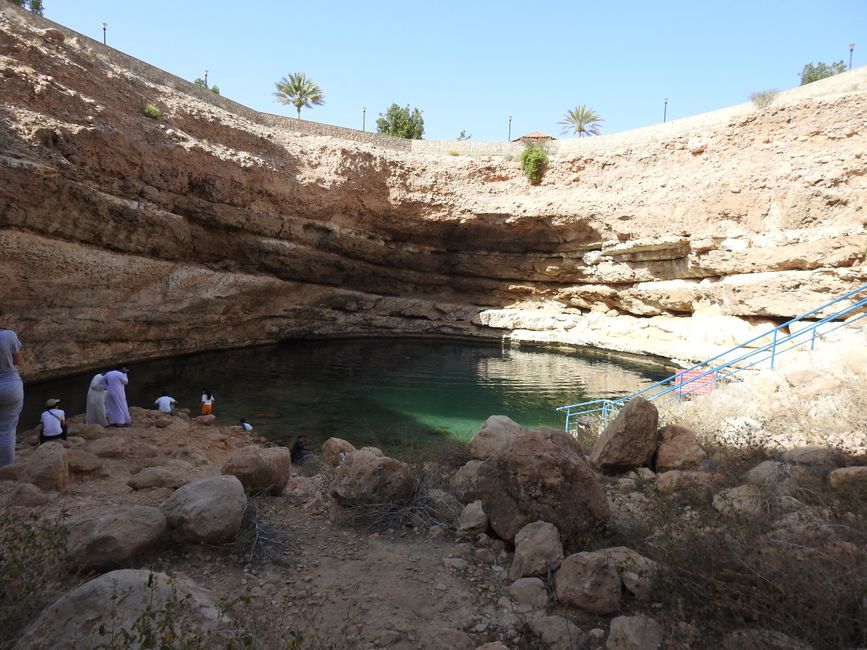
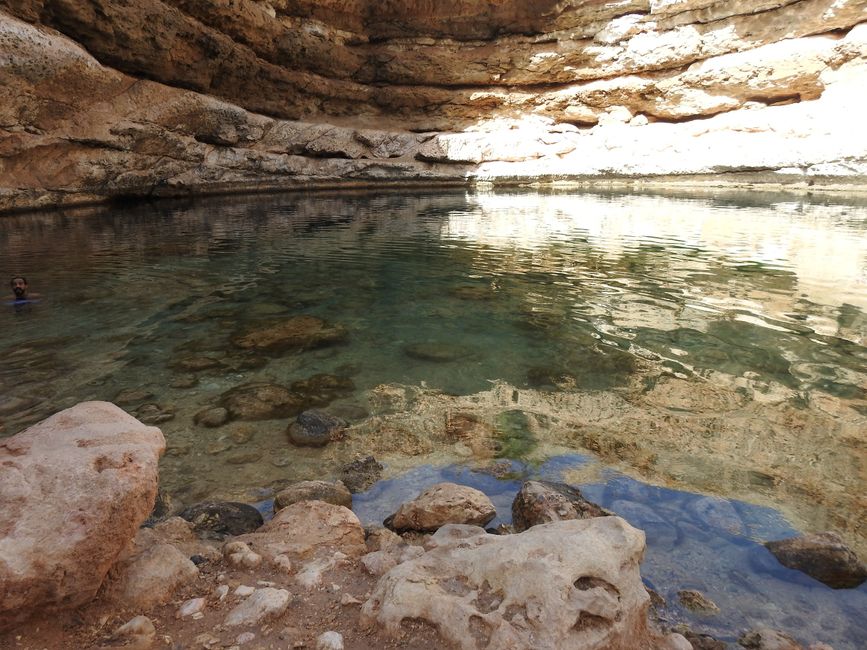
Naročite se na glasilo
From the Desert to the Coast
After leaving the Wahiba Sands and adjusting the tire pressure to normal, we drive on the brand new - and hardly used - highway back to the coast towards Sur.
Sur was one of the main trading ports of Oman from the 16th to the 19th century, but not much of its old splendor remains. Today, Sur is the last place in Arabia where dhows are built, purely by hand - without plans, but only based on traditional knowledge. Nowadays, it is practically unaffordable, except for wealthy Arabs from Saudi Arabia, Qatar, and the Emirates.
Our next destination is the Bibi Maryam Mausoleum in the ancient - now almost completely destroyed - city of Qalhat. Historically, Qalhat was a significant trading center on the Arabian Sea before 1500. Sea routes to India, Yemen, and the Arabian (Persian) Gulf started from here. Essentially, the place served as a middle trading station for trade between India and Arabia. Qalhat was the second capital of the Sultanate of Hormuz, which controlled access to the Arabian Gulf at the Strait of Hormuz for several centuries from around 1300 to 1508. Qalhat was well-known as a trading center beyond the region, and it was mentioned and visited by European and Arabian travelers in their writings, including Marco Polo (1254–1324) and Ibn Battuta (1304–1377). The city never recovered from its destruction by the Portuguese in 1508, and the trade moved to Sur and Muscat. Currently, only a few buildings and ruins testify to its former importance. The most significant architectural monument is the mausoleum of Bibi Maryam. The mausoleum was built in the same style as similar buildings from the same period in Iran and Central Asia and was commissioned by Bahauddin Ayez, the Sultan of Hormuz and ruler of Qalhat, for his wife, Bibi Maryam. The ancient sites have been recognized as a UNESCO World Heritage Site since 2018. The excavations and partial restorations, which have been conducted for many years, are currently halted once again. We are completely alone in this not so easily accessible facility.
Our last stop before Muscat brings us to the Hawiyat Najm Park with the Bimmah Sinkhole, a sinkhole near the sea. It was formed by erosion caused by the sea and not, as the Arabic name "The Well of the Fallen Star" suggests, by a meteorite impact.
And now it's only 130 km on the highway to Muscat.
From desert to coast
Leaving the sands we are driving to Sur, a famous traders’ city in the medieval ages, today the last dhow building yard in Arabia is still active.
Next stop is the antique city of Qalhat and the famous Bibi Maryam Tomb there. This city had a glamorous history in the 14th to beginning of the 16th century for trading between Arabia and India. This story came to a sudden end in 1508 – complete destruction by the Portuguese.
Finally today we are visiting the Bimmah Sinkhole, a doline created by the nearby sea.
Naročite se na glasilo
Odgovori
